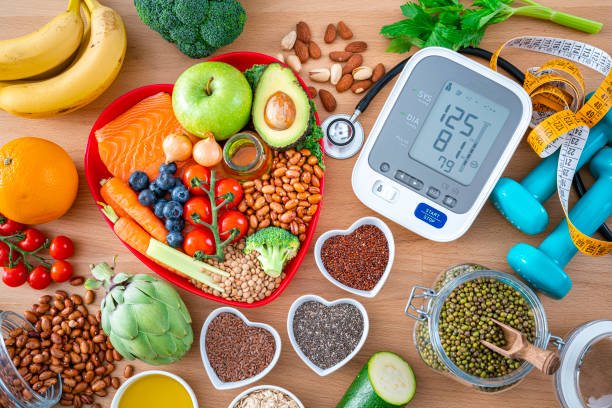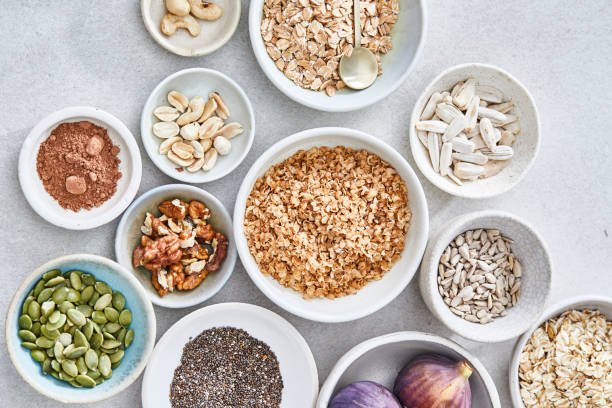
Prevent Cardiovascular Disease! Low Sugar, Low Sodium, High Fiber, Good Fat, Keep Four Dietary Principles That Never Heart Your Heart
According to the latest statistics from the WHO, heart disease ranks first among the top 10 causes of death in the world, and has remained so for several consecutive years, showing that Chinese people still have insufficient understanding of heart disease and continue to ignore it. Since the causes of cardiovascular disease are closely related to diet, if you can follow the four dietary principles of low sugar, low sodium, and high fiber and good fat intake, you can effectively prevent cardiovascular disease!
This article summarizes the following dietary key points to prevent and improve heart disease, to help you and my relatives and friends who are at risk of heart disease to check together. Protecting cardiovascular disease starts with diet control!
Good or bad fat, key to heart disease risk
Atherosclerosis is the main cause of cardiovascular diseases such as coronary heart disease. Fatty plaques accumulate in blood vessels, causing them to become hardened, narrowed or blocked. If people with heart disease do not control themselves and maintain a healthy diet, they are likely to suffer from this. Plaque buildup worsens.
Among them, the fats that have a great impact on heart disease are “saturated fats”, such as animal fats such as beef and pigs or dairy products, and “trans fats” such as French fries made with hydrogenated vegetable oil, Cookies, cakes, salad dressings, etc. are the most dangerous. Not only will both increase LDL (Low-Density Lipoprotein, commonly known as bad cholesterol), increasing the risk of fatty plaque accumulation.
The trans fat is processed vegetable oil, and its structural formula is trans unsaturated fat. Compared with saturated fat, it increases the risk of cardiovascular disease by nearly 30%. It is the most harmful fat to cardiovascular disease and is harmful to the human body. It’s harmful to your health! (Additional video on the same scene: Are you worried about high cholesterol when eating eggs? Let us dispel cholesterol myths)
The American Heart Association (AHA) recommends that people’s diet should be based on monounsaturated fat (Monounsaturated fat) and polyunsaturated fat (Polyunsaturated fat). The former can reduce bad cholesterol levels, while the latter can Reduces total body cholesterol levels.
If you consume 2,000 calories a day, the saturated fat intake should not exceed 6%, which is 13 grams; as for trans fats, it is best to avoid them entirely. In fact, it is not difficult to consume foods or oils rich in unsaturated fats every day. The following choices are the types of foods that patients with heart disease should eat more of:
- olive oil
- linseed oil
- avocado
- Nuts
- kale
- spinach
- salmon
- trout
- Herring

Say No to Refined Sugar! Don’t hurt you heart and don’t gain weight
In addition to fat, excessive sugar intake is also one of the culprits in cardiovascular disease. Although the human body needs the right amount of sugar to convert calories, high-quality carbohydrates can also achieve the same purpose. In fact, the human body can obtain the sugar it needs from natural foods, and any additional added sugar may become a burden.
Therefore, reducing or avoiding the intake of sugary drinks and abstaining from various high-sugar processed foods such as desserts and biscuits can be said to be a daily priority for patients with cardiovascular disease. Regarding the choice of carbohydrates, it is also recommended that refined starches such as white bread and white noodles should be replaced by the following foods:
- Whole wheat or multigrain bread
- brown rice
- Quinoa
- barley
- oat
2 high-fiber foods you must eat! It relies on it to metabolize cholesterol
We all know that eating more foods rich in dietary fiber helps defecation. In fact, defecation also helps the body metabolize and excrete cholesterol smoothly. Since cholesterol is one of the components of bile, when the body absorbs food into the intestines, bile can help digest fat. At this time, part of the bile will be absorbed and reused by the intestines, and the other part will be excreted from the body during defecation.
Dietary fiber can not only increase satiety and aid digestion and defecation, but is divided into two categories: “water-soluble fiber” and “water-insoluble fiber” according to their functions; “water-soluble fiber” can combine with cholesterol particles to reduce absorption in the small intestine According to the amount of cholesterol, “water-insoluble fiber” can increase the amount of stool and promote gastrointestinal motility, allowing the body to excrete cholesterol more efficiently.
You can get rich dietary fiber by consuming the following foods:
- Insoluble fiber
- Whole grain foods: brown rice, wheat, corn, barley, lotus seeds, red and mung beans, pumpkin, etc.
- carrot
- celery
- tomato
- Whole grain foods: brown rice, wheat, corn, barley, lotus seeds, red and mung beans, pumpkin, etc.
- Soluble fiber
- barley
- oat
- beans
- nut
- apple
- citrus
- pear
- barley

Many studies at home and abroad have pointed out that a high-sodium diet can easily lead to high blood pressure and increase the risk of cardiovascular disease. The recommended daily sodium intake should be 2.4 grams, and the World Health Organization (WHO) recommends that the sodium intake should be less than 2 grams.
However, in recent years, the latest research has also put forward negative discussions on whether salt should be restricted and a low-salt diet should be adopted. For example, The Lancet, a well-known medical journal, presented a large-scale study on the relationship between sodium intake and blood pressure, and concluded that only people who consume more than 5 grams of sodium per day will Increased risk of stroke and cardiovascular disease.
Research in the journal Frontiers in Endocrinology also found that insufficient sodium intake may increase the risk of cardiovascular disease in patients with diabetes.
Based on the results of the two studies, it is recommended that the public should aim to control their daily sodium intake between 2.4 and 5 grams. Even if it is easily exceeded, they can help balance the sodium in the body by eating more potassium-rich foods. Potassium levels. If you are a heart disease patient, follow your doctor’s dietary recommendations.
Here are some ways to reduce your sodium intake on a daily basis:
- Don’t drink too much soup when eating noodle soup, because noodle soup contains a lot of sodium dissolved from the noodles.
- Eat less pickled, processed foods and soups, as these foods generally contain high amounts of sodium during processing.
- Salt can be replaced with other spices, such as pepper, cinnamon, onions, ginger, garlic, etc.
- Thick sauces are usually high in sodium, so it is recommended to use less dipping sauce.
Diet tips for heart disease patients
Based on the above, for patients with heart disease, dietary control is the first step in active prevention. In fact, diet control in daily life is not difficult. In addition to recommending that all six categories of food be consumed to obtain adequate nutrition, the following key dietary tips are summarized so that patients with heart disease can more effectively apply them in daily life.
Beware of diets high in cholesterol, fat, salt and sugar.
Controlling calories and weight can reduce the burden on the heart.
Two dietary methods that prevent or improve heart disease, such as the Mediterranean diet and the DASH diet, have great impact.
However, for those who are at high risk of heart disease, or those with special conditions or serious heart disease, it is still recommended to discuss with a doctor before changing your diet.












